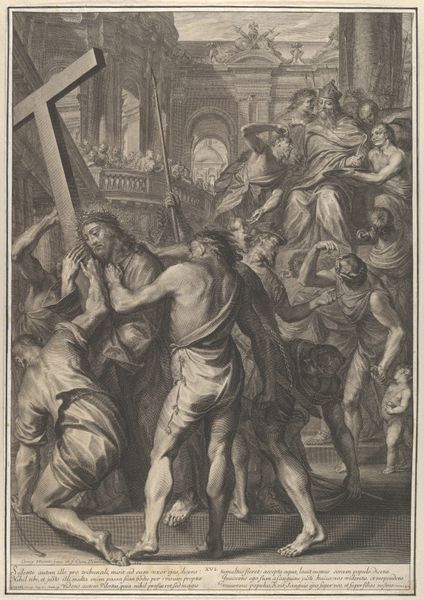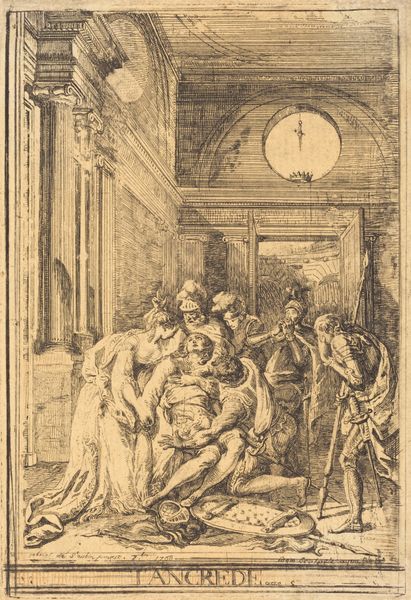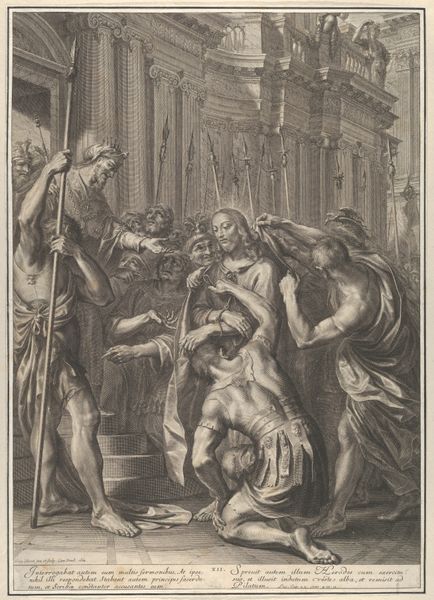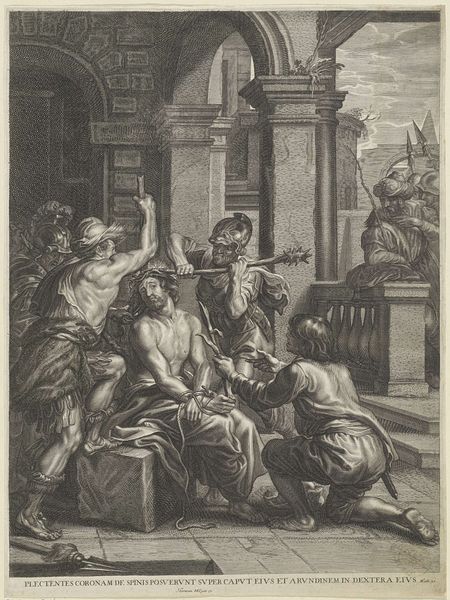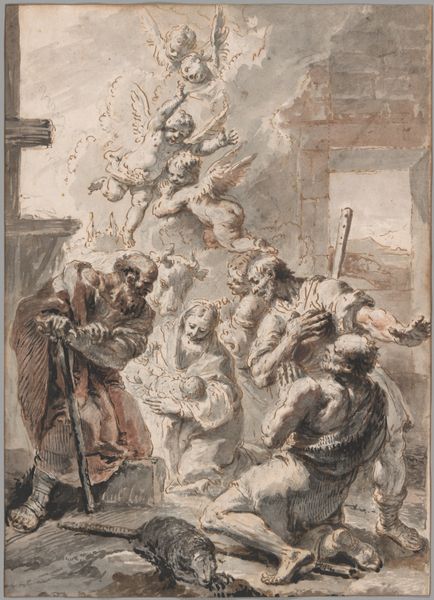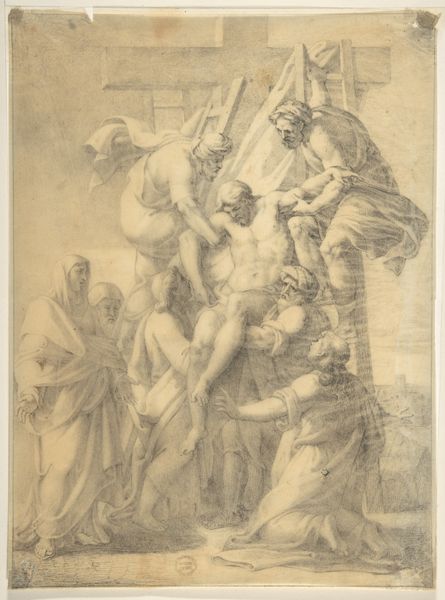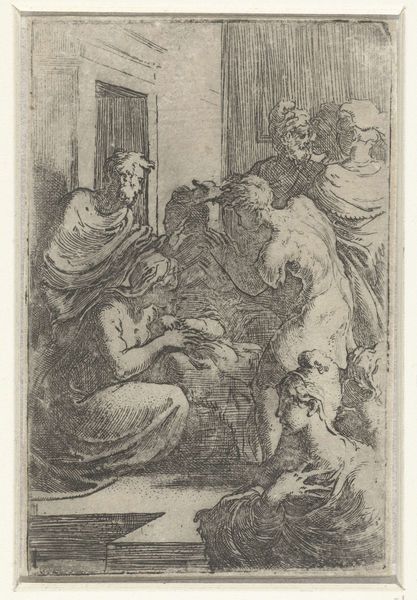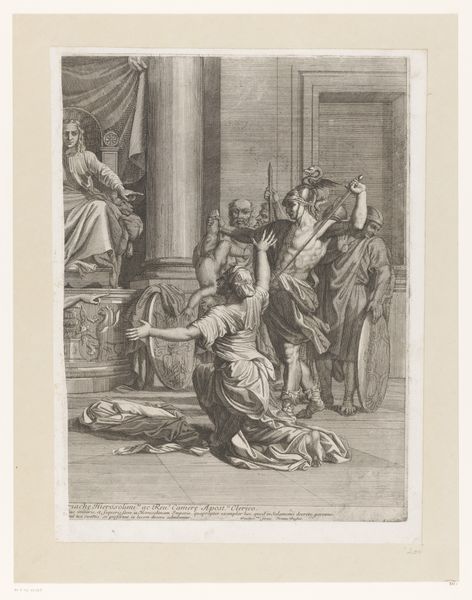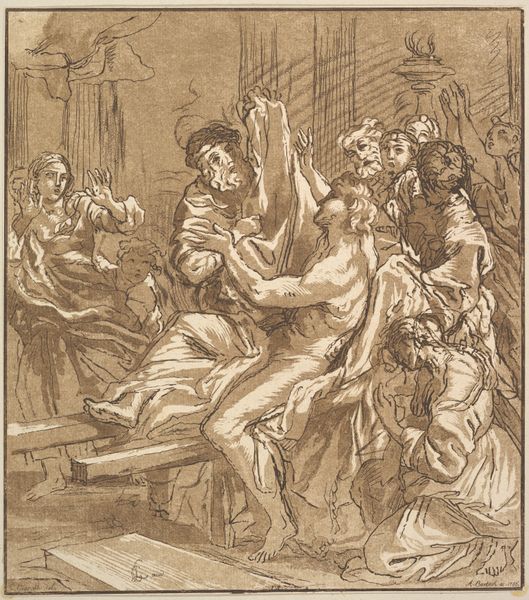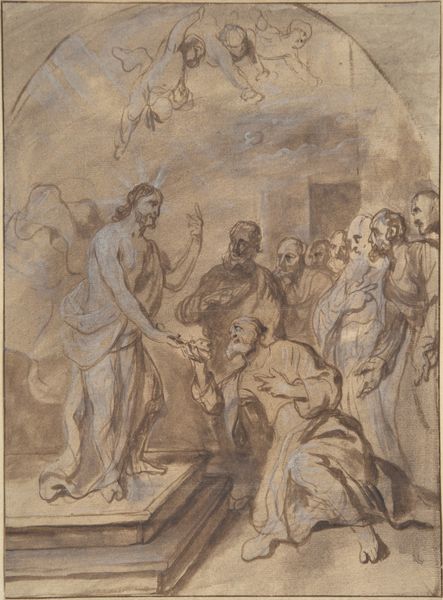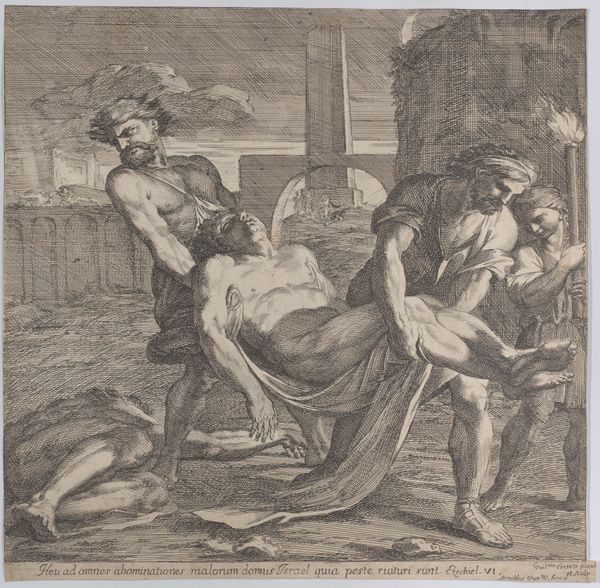
drawing, print
#
drawing
# print
#
landscape
#
figuration
#
child
#
men
#
portrait drawing
#
genre-painting
Dimensions: 6 7/16 x 4 15/16 in. (16.4 x 12.5 cm)
Copyright: Public Domain
Curator: We’re looking at "Scene at a Fair: A Peep Show," an 18th-century drawing now held at the Metropolitan Museum of Art. It's unsigned. Editor: The sepia wash gives it such a transient feel—fleeting, like a moment caught and already fading. The architecture is only lightly sketched. Curator: Precisely. The architecture merely frames the action. Notice how the figures dominate, particularly the showman presenting his peep show. The composition guides us towards that central transaction. It seems to me, this drawing invites questions about who constitutes an audience and how gazes are constructed. Editor: True, but the artist really emphasizes the fair as a space of exchange—not just money, but labor and human interaction. Look at the materiality, how simple washes on paper convey this bustling scene, this micro-economy. I am really taken by how the scene suggests the materiality of entertainment. Curator: A useful point. See how the artist renders light and shadow. It accentuates specific faces in the crowd. This play emphasizes reactions, internal states exposed for brief moments. The narrative hinted at, that voyeurism, seems key here. The whole construction hinges upon creating an experience for viewers of the art. Editor: Absolutely. But it also serves as commentary. Fairground entertainment, itinerant peddlers of illusion offering accessible fantasies. Notice the dog resting underneath, seemingly unfazed; he highlights the grounding of our needs against ephemeral entertainment. Curator: Indeed! We consider form to reflect culture here. Consider the gestural fluidity and formal relationships: It mirrors the casual viewing practices of those who partake in the ‘Peep Show.’ It’s all so deftly orchestrated. Editor: These drawings were crafted and conceived, no doubt, for an elite audience as they depicted scenes that showed how different layers of the population used their money. Perhaps the image served as a way to consider fair culture without having to encounter it personally? Curator: In the end, an insightful representation of the dynamics between spectacle, audience, and artist. Editor: Yes, I agree. This has shifted my understanding of materials within such work and its broader meanings beyond formal qualities.
Comments
No comments
Be the first to comment and join the conversation on the ultimate creative platform.
